

Project Implicit. The existence of implicit bias is beyond reasonable doubt: A refutation of ideological and methodological objections and executive summary of ten studies that no manager should ignore. The Bias Beneath: Two Decades of Measuring Implicit Associations. Over the last 20 years, millions of people have used an online test to probe attitudes they didn’t know they had.
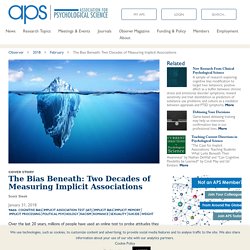
Since its online debut in 1998, the Implicit Association Test (IAT) has allowed people to discover potential prejudices that lurk beneath their awareness — and that researchers therefore wouldn’t find through participant self-reports. Basically, the IAT asks participants to categorize words or images that appear onscreen by pressing specific keys on a keyboard. The time it takes for participants to respond to different combinations of stimuli is thought to shed light on the mental associations they make, even when they aren’t aware of them.
The IAT is the brainchild of APS William James Fellow Anthony Greenwald (University of Washington), and he began working collaboratively on it with APS Past President Mahzarin Banaji (Harvard University) and APS Fellow Brian Nosek (University of Virginia) in the mid-1990s. Opinions on the IAT are mixed. Obesity Suicide Risk References. How to Think about 'Implicit Bias' When is the last time a stereotype popped into your mind?
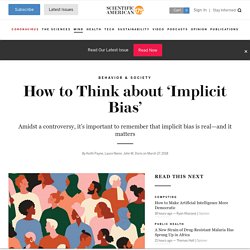
If you are like most people, the authors included, it happens all the time. That doesn’t make you a racist, sexist or whatever-ist. It just means your brain is working properly, noticing patterns and making generalizations. But the same thought processes that make people smart can also make them biased. This tendency for stereotype-confirming thoughts to pass spontaneously through our minds is what psychologists call implicit bias. Studies of implicit bias have recently drawn ire from both right and left. First, much of the controversy centers on the most famous implicit bias test, the Implicit Association Test (IAT). The IAT is a measure, and it doesn’t follow from a particular measure being flawed that the phenomenon we are attempting to measure is not real.
In fact, there is lots of other evidence. The second misunderstanding is about what scientists mean when they say a measure predicts behavior. The difference is crucial. Project Implicit test. I forbindelse med alle testene vil vi spørre deg om din oppfatning av eller holdning til disse problemstillingene.
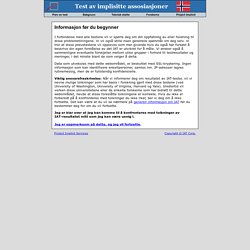
Vi vil også stille noen generelle spørsmål om deg selv. Vi tror at disse prøvetestene vil oppleves som mer givende hvis du også har forsøkt å beskrive din egen forståelse av det IAT er utviklet for å måle. Vi ønsker også å sammenligne eventuelle forskjeller mellom ulike grupper i forhold til testresultater og meninger, i det minste blant de som velger å delta. Data som utveksles med dette webområdet, er beskyttet med SSL-kryptering. Ingen informasjon som kan identifisere enkeltpersoner, samles inn. Viktig ansvarsfraskrivelse: Når vi informerer deg om resultatet av IAT-tester, vil vi nevne mulige tolkninger som har basis i forskning gjort med disse testene (ved University of Washington, University of Virginia, Harvard og Yale). Jeg er klar over at jeg kan komme til å konfronteres med tolkninger av IAT-resultatet mitt som jeg kan være uenig i.
Unconscious Bias. What is Unconscious Bias?
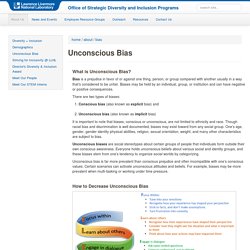
Bias is a prejudice in favor of or against one thing, person, or group compared with another usually in a way that’s considered to be unfair. Biases may be held by an individual, group, or institution and can have negative or positive consequences. There are two types of biases: Conscious bias (also known as explicit bias) and Unconscious bias (also known as implicit bias) It is important to note that biases, conscious or unconscious, are not limited to ethnicity and race. Unconscious biases are social stereotypes about certain groups of people that individuals form outside their own conscious awareness. Unconscious bias is far more prevalent than conscious prejudice and often incompatible with one’s conscious values. 12 Examples of Unconscious Bias & Tips to Reduce Them. If you’re hiring based on ‘gut feeling,’ you’re likely hiring on the basis of unconscious bias.
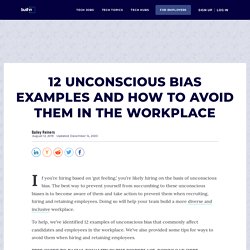
The best way to prevent yourself from succumbing to these unconscious biases is to become aware of them and take action to prevent them when recruiting, hiring and retaining employees. Doing so will help your team build a more diverse and inclusive workplace. To help, we’ve identified 12 examples of unconscious bias that commonly affect candidates and employees in the workplace. We’ve also provided some tips for ways to avoid them when hiring and retaining employees.
Unconscious bias: Stereotypical hiring practices.